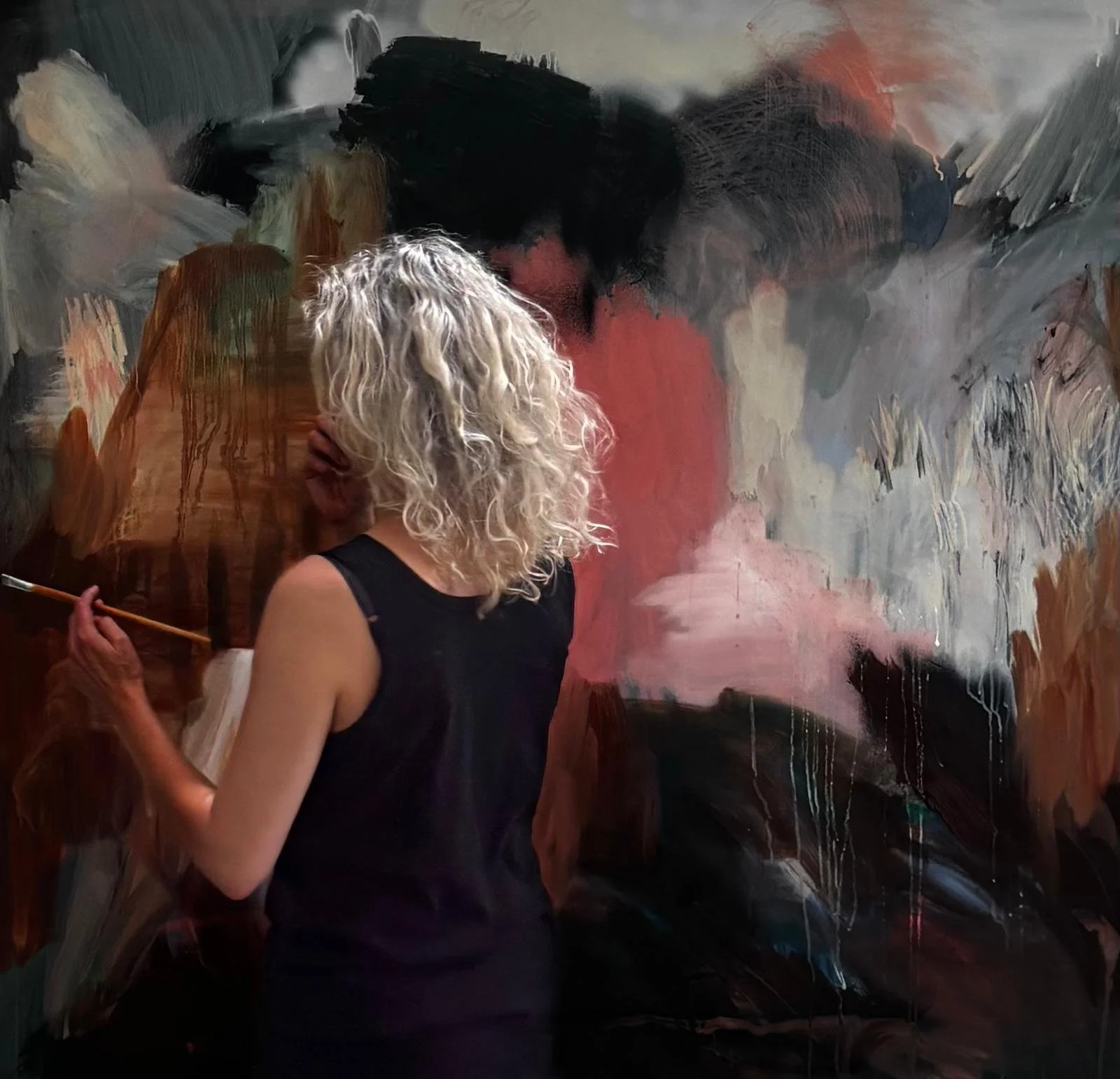Ellen Vrijsen | Reminders | 27.09.2025 - 09.11.2025
Confessions and reminders (2019-2025)
The pictorial image has long forsaken its figurative vocation. We no longer paint to represent the world but to make a different world, to attack the tensions, the cracks, the clichés of the world we inhabit. We paint in order to cope with life as it inevitably changes our sensibility, our way of feeling and thinking. Painting is no longer just a factory of images – it’s a comment of seeing and living. When the eye has been reduced to an optimally trained reader of coded information, painting has one last virtue: it’s the figural trace of embodied memory, it nurtures colourful planes for meaningful moments, it prompts a sense of place in a world of generic spaces, foreseeable emotions and programmable thoughts.
Ellen Vrijsen’s latest exhibition is both a chronological and chromatic overview of works that aims at redefining the vocation of painting as an artistic practice. These paintings are both compelling objects and vivacious phrases of colour. A fluid green or blue background constitutes an intriguing scenography: black, red and yellow traces engage with hesitant thoughts and reoccurring intuitions. Call them a syntaxis of memory and affect. Call them phrases that - just like dreams or hallucinations - can be read in different directions. These paintings are the corporeal act of shaping memory as an image. They expect from you, the viewer, the most cherished and rare thing there is: an attentive gaze and the desire to see the world through the chromatic landscape that they confront you with.
Tekst & concept by Vlad Ionescu
IG: @_vlad_ionescu
Artist Ellen Vrijsen at work in her studio
Selection of exhibitions
2025: Solo REMINDERS at ( s o o n) gallery, Antwerp
2025: Collaboration with Toos Franken Art/Fashion Design, ongoing
2025: “A Breathing Realm”, Munich Art Gallery/ Projectraum Munich Art - duo show
2024: studio visit in collaboration with art dealer Thomas Odeurs (ongoing)
2024: ‘Kunst.Vormern’, MAD Gallery, Hasselt - group show
2024: ‘Marres’, Atelier des amis, Lanaken - solo show
2024: ‘Je bent te laat waar heb je weer gezeten’, Sint-Ursula kapel Moment, Tongeren - group show
2024: ‘Beyond Boundaries’, Kunstennacht, Refugehuis, Hasselt - group show
2024: Artist in residence - Art Circle, Brda, Slovenia
2024: Artist in residence - Art Circle, Sankt Wolfgang, Austria
2023: ‘Jubileum 10 years’, Galerie Storm, Herentals - group show
2023: ‘In Absence’, MAD Gallery, Hasselt - group show
2023: ‘PINK MIST LOST’, Galerie Dessers, Hasselt - solo show
2021: ‘OXYGEN’, Galerie Dessers, Hasselt/Kunst aan zet - group show
2021: solo show at ydde.be/Ukkelberrifun, Boechout
2020: ‘MEET ME AT THE POOL’, Galerie Dessers, Hasselt - solo show
2020: ‘IN THE ABSENCE OF THE ARTIST’ (lockdown 1) - virtual group show
2019: ‘RESET’, Galerie Dessers, Hasselt - group show
2019: ‘Trust the process’, PXL MAD, School of Arts, Hasselt - solo show
2019: Stormloop 2019, kunstroute Herentals
2018: Juhla showroom, Herentals - permanent exhibition (ongoing)
2017: TARMAX, art festival - group show
2017: Galerie Storm, Herentals - duo show
2017: LOMAK (Loois Museum voor Actuele Kunst)
2015: Art Gallery Decrauw, Ostend - group show

